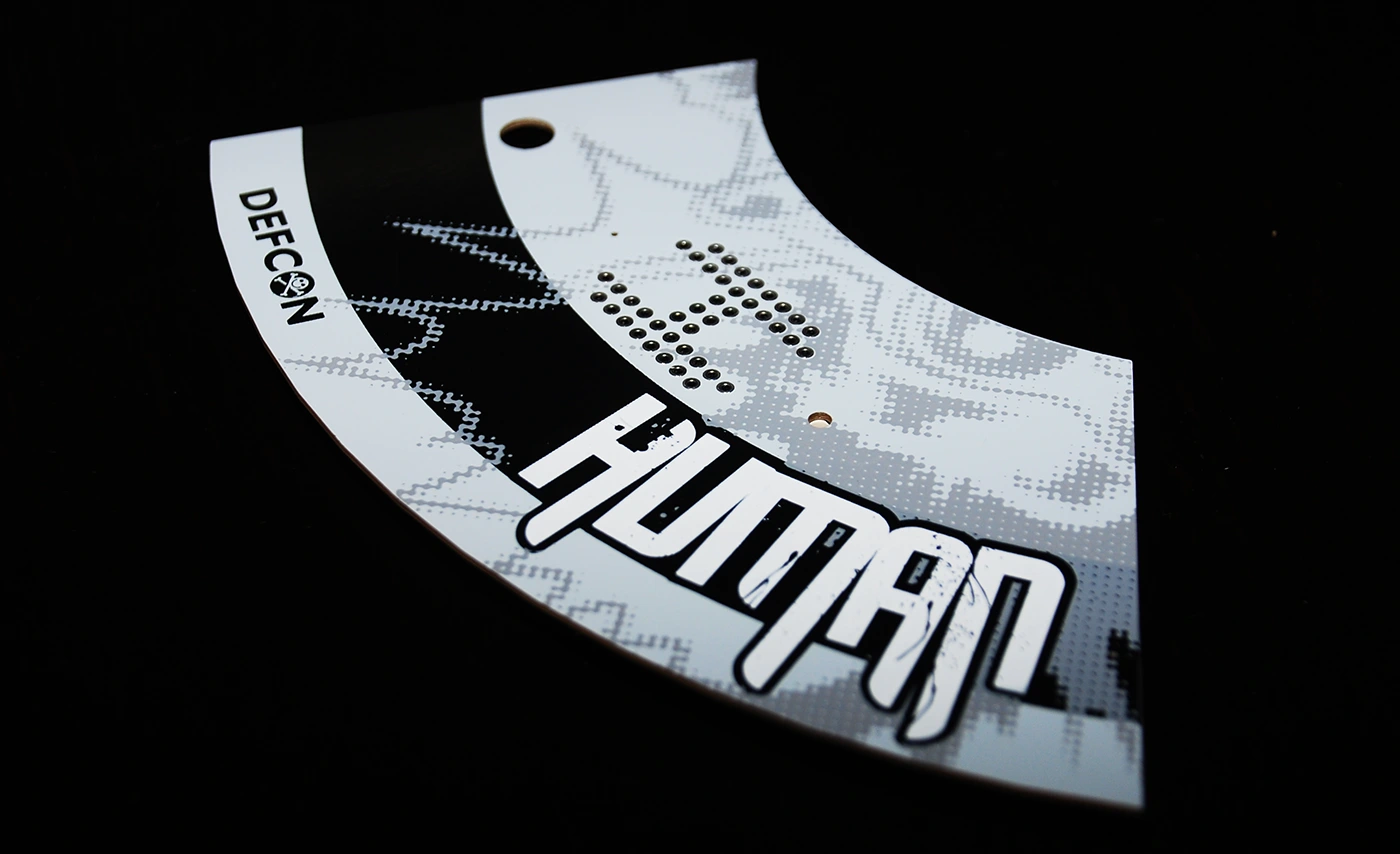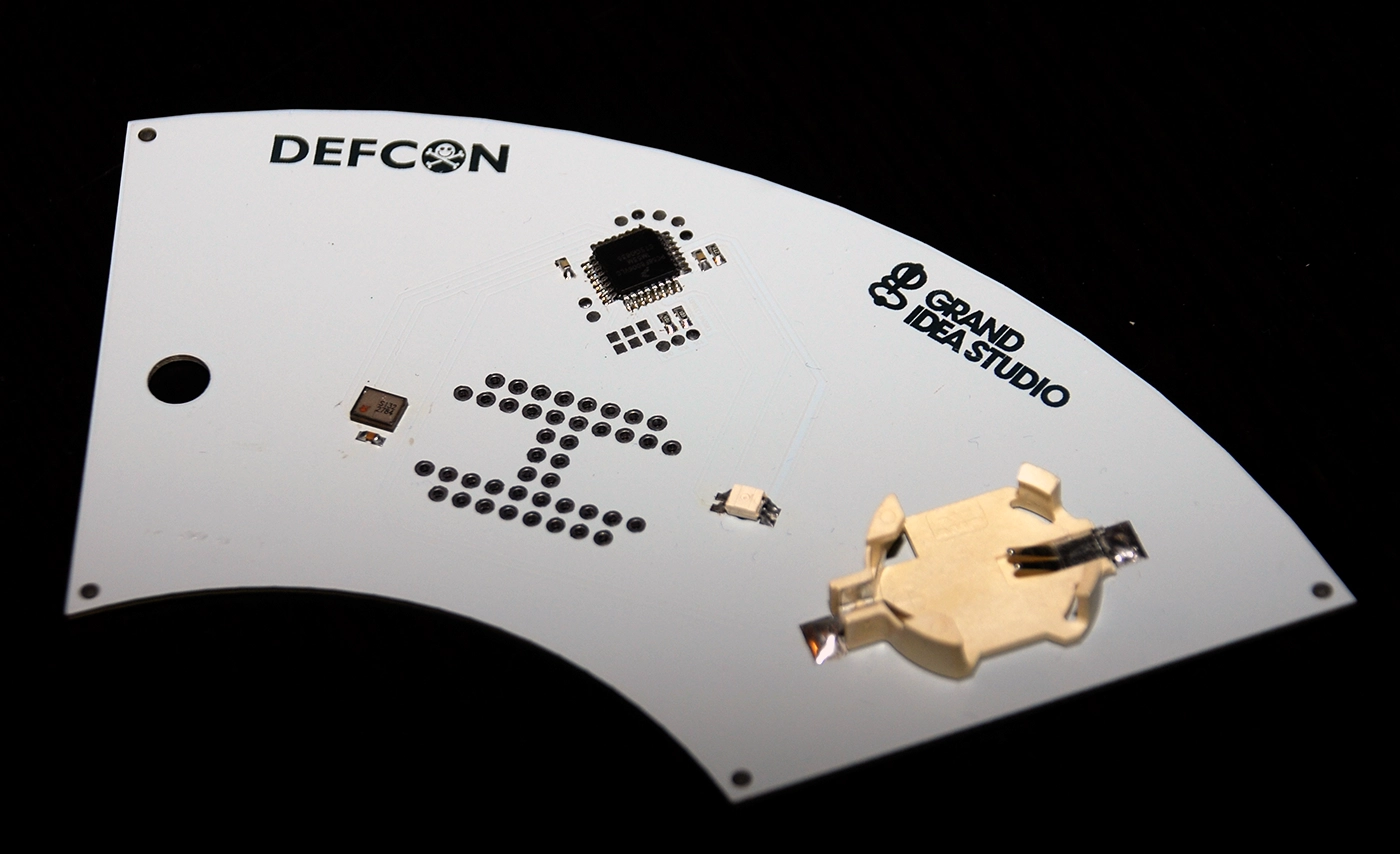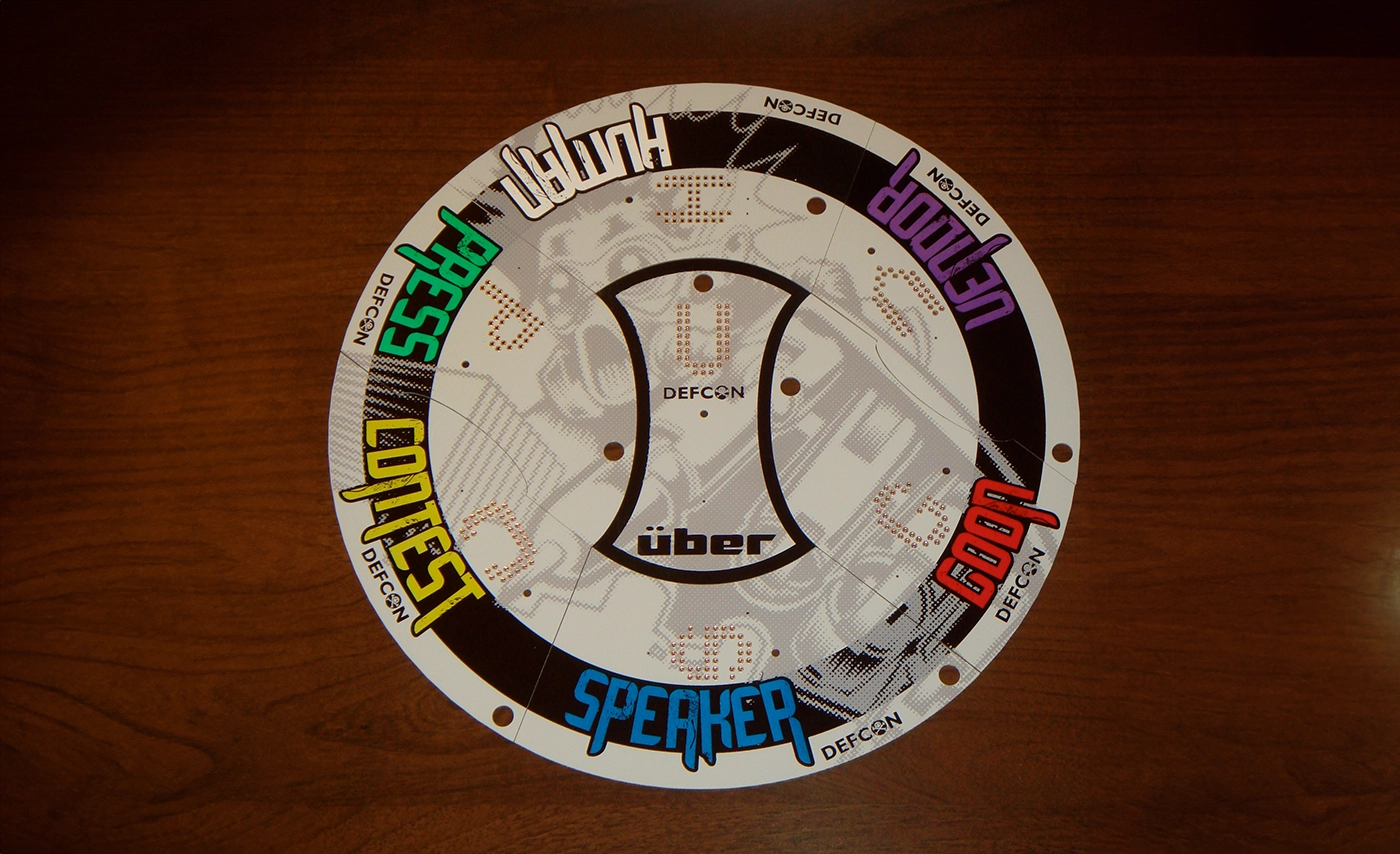DEFCON 17 Badge



The DEFCON 17 Badge was created for the 2009 edition of DEFCON, the largest and oldest continuously running hacker and computer security convention in the world. The badge uses active electronics, features an artistic circuit board, and provides an open design to allow attendees to experiment with and modify the badge to their liking.
The goal of this year's design was to be elegant and stark, yet powerful. The badge is based around a Freescale MC56F8006 16-bit digital signal controller, Knowles Acoustics SPM0408LE5H amplified MEMS microphone, and Kingbright RGB LED. Its three operating states are determined solely by the sound level received by the microphone:
- Party: The multicolor LED is affected by audio input volume and frequency
- Quiet/Idle: The LED slowly blends through a pattern of colors
- Sleep
Other features include multi-badge communication via a wired interface and a static serial bootloader for in-the-field firmware upgrades. Source code was developed using the freely available CodeWarrior for 56800/E Digital Signal Controllers. A single CR2032 3V Lithium coin cell battery provides the required power. A total of 6,694 badges were manufactured with a unique badge shape used to denote each type of DEFCON clientele: Human, Goon, Press, Speaker, Vendor, Contest Organizer, and Uber (awarded to the winners of official DEFCON contests). Each shape serves as a puzzle piece and the puzzle can be completed by placing the seven badges in the correct positions. Grand Idea Studio once again hosted the DEFCON Badge Hacking Contest to award the most ingenious, obscure, mischievous, or technologically astounding badge modification created during the weekend conference. There were 32 official entries in this year's contest. The winning entry by Zoz was a two-part anti-surveillance system: Defeating automated facial recognition by generating alternating colors and patterns of light in order to create optical noise and aiding in bypassing motion detection by measuring ambient temperature and guiding the user as to how slowly to move through the room. Additional contest information can be found at the official DEFCON 17 Contest Results page.
Documentation:
- Schematic
- Bill-of-Materials
- Assembly Drawing
- Test Procedure and Video (YouTube)
- Source Code: Freescale MC56F8006 for CodeWarrior
- Slides: Making (and Hacking) the DEFCON 17 Badge
- Article: Making the DEFCON 17 Badge (Nuts & Volts Magazine, July 2010)
- Poem: DEFCON 17 Haiku
- Pictures (Flickr)
- Video Samples (YouTube)
Selected Badge Hacking Contest Entries:
- Project Files: Blue Box/DTMF Dialer/Voice Amplifier (501d3r Guy, updated June 14, 2011)
- Project Files: Sound-Fearing Blimp: Three badges attach to the bottom of a toy blimp. Each badge drives a fan based on the sound level detected on its microphone, which effectively steers the blimp away from high noise areas (Team Hack the Badge)
- Project Files: Fffft! 32-bin Fast Fourier Transform with a 15 LED PWM-controlled display (Simap)
- Project Files: Badge Bulletin Board System: An incomplete attempt to port an old school BBS to the badge (Mark Renouf and Jason Scott)